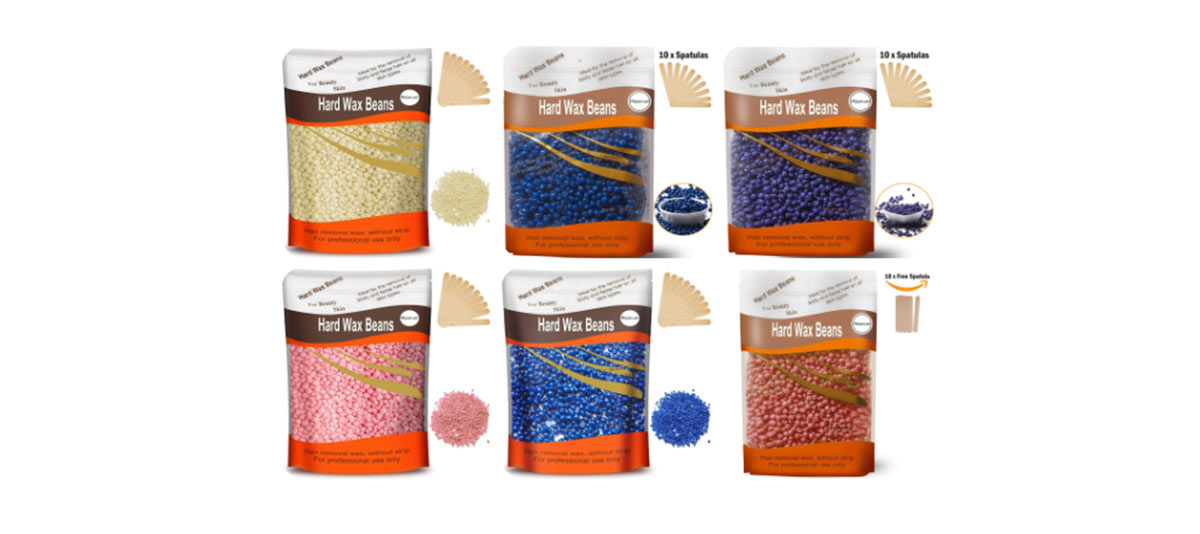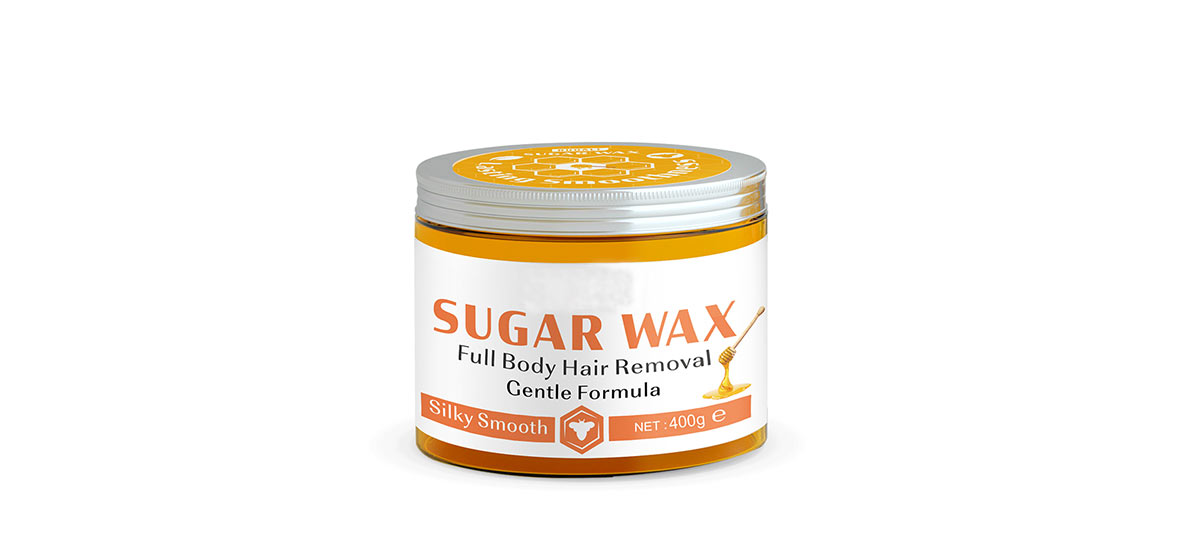Waxing is unpleasant enough, but deciding which type of wax to use for hair removal is just as painful. Not all waxes are created equal, but they are created to remove hair in one way or another. It can be a bit confusing to use which type for what. While traditional waxes can be clearly classified as soft or hard waxes, things get a little more complicated. Where does added sugar fit into the equation? (Is it even wax?) What type of wax should I use for my bikini area?
Next, we’ll break down the different types of hair removal wax. After learning this guide, will help you choose the right wholesale waxing supplies faster. Let’s start.
1. Warm Soft Wax
Soft warm waxes are cream or resin-based and are used for stripping waxes. Warm it gently and apply it thinly to the skin. A strip of cloth is pressed on and removed, taking away the hair at the same time. Spreadable waxes are often used to cover larger areas, such as the legs and arms. While it picks up even fine hairs very effectively, the soft wax also clings to the skin, so only apply it once per area.
“Cream-based warm waxes are gentler on the skin”. “Warm waxes based on honey or resin are considered old school, they can be hot and sticky and irritate the skin. However, there are many skilled beauticians who still offer good quality honey/resin-based waxes.” No Honey or resin-based products are recommended for sensitive skin. “It could be too hot, too sticky, or too rough.”
For sensitive skin, look for a creamy wax that contains titanium dioxide, which acts as a buffer between the wax and the skin.

2. Warm Hard Wax
Hard waxes are an effective option for both areas with thicker hair and areas with fine, thinning hair. Wax applies when heated and hardens as it cools. It is also known as a no-stripping wax because, in its hardened form, it acts as a peeling wax by itself. After cleansing, a small amount of pre-epilation oil is usually applied to the skin to protect it from the effects of the wax. When the wax is heated to a spreadable state, it “hardens into a pliable material that is pulled off by a ‘lip’ made by the provider.”
Hard wax is applied in a thicker layer than soft wax, but also in the direction of hair growth—an important detail. “When pulled in the wrong direction, hair can break and grow ingrown. The wax grips the hair in a shrink-wrapping fashion as it hardens, rather than sticking to the skin like soft wax. As a result, it is better for smaller, more sensitive areas such as the lips, nose, underarms, and bikini lines. When used on larger areas, like the legs, it “can cause hair breakage at the end of the pull.”
Its gentle nature is great for those with sensitive skin, but on the other hand, it’s not strong enough to grab hairs from bulbs, which means you may need to go over an area several times. “This can cause skin irritation. Be sure to use a quality product when using hard wax.” Less expensive hard wax varieties can become brittle and inflexible when cooled, which can make for a messy and ineffective wax.
As with soft wax, the hair needs to be long enough for the wax to grab hold of. “The hair should be at least 1/4 inch long (about the size of a sprinkle). It’s best to stop shaving at least five days beforehand.”

3. Cold Soft Wax
Cold wax can be taken straight out of the pot and applied directly to the skin, or it can be prepared in strips. This method is attractive to many people because it eliminates the risk of burning the skin from too hot wax. While it’s handy, it’s stronger, and it can be tricky to apply a thin layer evenly. It’s usually not as effective as warm wax and can leave hair attached to the skin. Many people also find that cold wax is more difficult to remove than heated wax. Some people even find it easier to warm the wax slightly before application to soften the application formula.

4. Prefabricated Wax Strips
The right amount of cold soft wax is already attached to the pre-waxed strip, ready to use without heating. This method is the most user-friendly and concise choice and is recommended for beginners. Not only are they easy to use, but there is no chance of using too many products. Depending on the amount of hair you want to remove, you can usually use the strips multiple times per area.
It is always advisable to “warm up” the wax strips a little by rubbing them between your palms, this will make them fit the hair better. Cold-rolled strip requires minimal preparation and has few moving parts throughout the operation, making it by far the most convenient travel option. As with any cold wax, there is no risk of burning the skin. Premade strips are recommended for smaller areas as they are not as easy to apply as hot wax.

5. Sugar Wax
Sugar waxing is one of the oldest known waxing methods, originating in the Middle East. It’s also one of the most natural and simple recipes, usually consisting of some combination of sugar, lemon, and hot water. “Sweetened isn’t wax: it’s a form of depilatory, but doesn’t have the same base”. Not technically a wax, this method of hair removal has been around for centuries for a reason.
It’s very gentle (as a wax), so it’s great for sensitive and reactive skin. Sugar wax works a lot like hard wax in that it grabs the hair without sticking to the skin. This type of formula will allow multiple passes over an area without the irritation that soft waxes can cause. Sugar wax is available in sticky balls that can be applied with fingers, or used with strips like soft wax. Because it can be moved around easily, sugaring can remove large or small areas of body hair, however, it works best on fine to medium hair types.
Unlike hard or soft resin-based waxes, sugar waxes are water-soluble, making cleanup easier. This also results in a reduction in ingrown hairs because the product does not get stuck in open follicles, preventing hair regrowth.
Apply sugar wax the opposite of traditional wax: apply to the grain, then remove with the grain.

6. Fruit Wax
Fruit waxes are streak-free like hard waxes, and only have fruit enzymes and extracts like papaya, strawberry, pomegranate, cranberry, and plum that benefit the skin. While exfoliating, the wax also nourishes the skin with antioxidants and vitamins (a win in our book).
Fruit wax is often a good option for people with sensitive skin as it won’t cause bumps, rashes, or marks, but you’ll want to make sure you’re not allergic to any of the ingredients. Fruit wax costs more than simple resin-based options, as with any natural beauty product.

7. Chocolate Wax
Chocolate wax is soft on the skin and is known as one of the least painful types of wax. It is moisturizing and enriched with soothing and nourishing ingredients such as Almond Oil, Soybean Oil, Sunflower Oil, Glycerin, Vitamin E, and other minerals. Cocoa itself is rich in antioxidants and acts as an emollient in the wax. Almond oil gives it anti-inflammatory properties—a benefit that’s very welcome when hair is falling out of the follicle.
key ingredient
Vitamin D, Vitamin E, and various minerals can be found in almond oil, making it an excellent moisturizer. It helps soothe skin from irritation and protects skin from damaging UV radiation.
Chocolate wax can be soft or hard, but it is always applied while it is warm. It has a low melting point, so it’s less likely to cause burns. The luxurious experience comes with a price tag to match, but for many, the glowing skin and spa-like indulgence are well worth it.





Leave A Comment